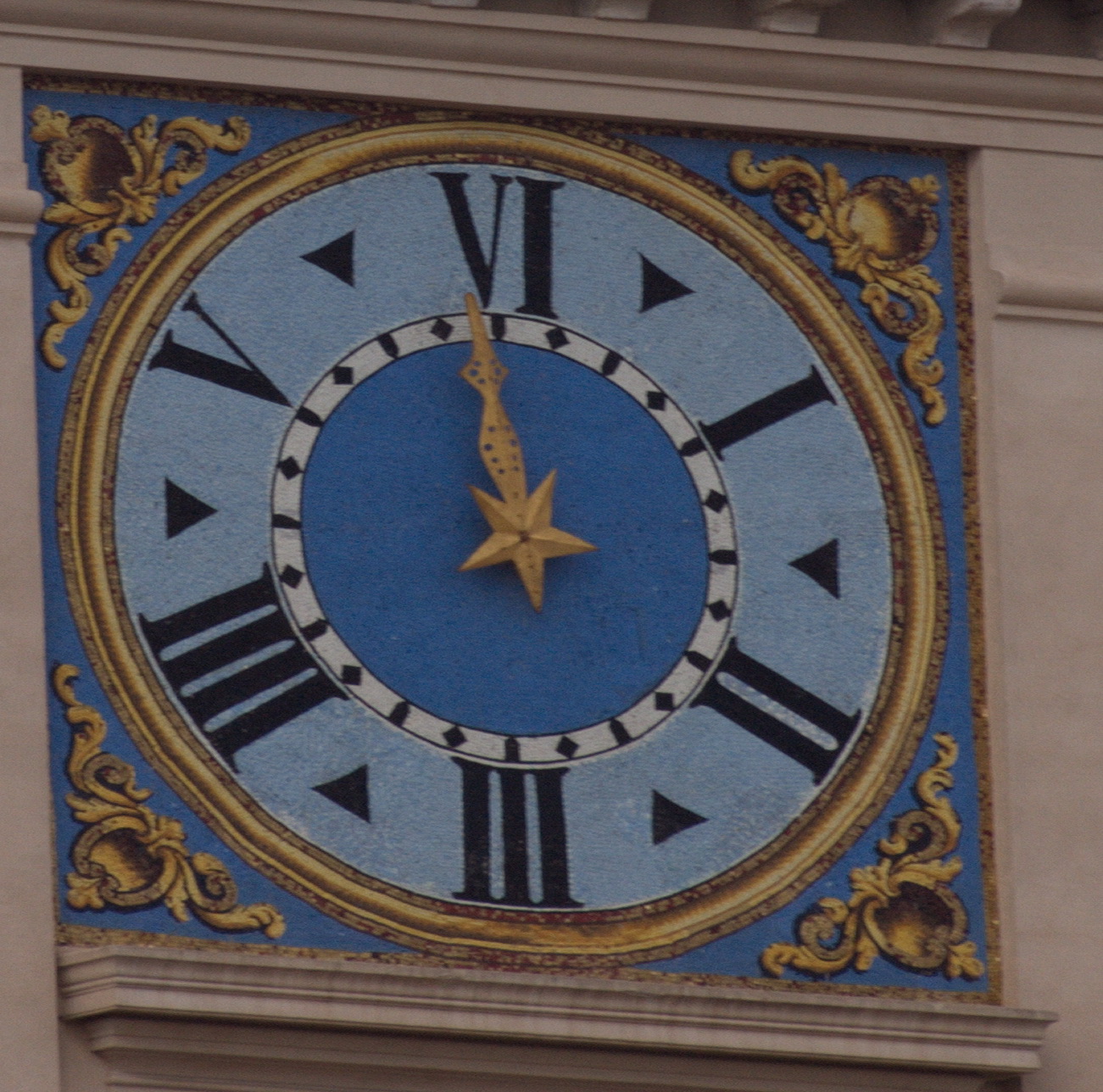Italian six-hour clock on:
[Wikipedia]
[Google]
[Amazon]
 The six-hour clock ( it, sistema orario a sei ore), also called the Roman () or the Italian () system, is a system of
The six-hour clock ( it, sistema orario a sei ore), also called the Roman () or the Italian () system, is a system of
 The six-hour clock ( it, sistema orario a sei ore), also called the Roman () or the Italian () system, is a system of
The six-hour clock ( it, sistema orario a sei ore), also called the Roman () or the Italian () system, is a system of date and time notation in Italy
Date and time notation in Italy records the date using the day–month–year format ( or ). The time is written using the 24-hour clock (); in spoken language and informal contexts the 12-hour clock is more commonly adopted, but without using ...
which was invented before the modern 24-hour clock
The modern 24-hour clock, popularly referred to in the United States as military time, is the convention of timekeeping in which the day runs from midnight to midnight and is divided into 24 hours. This is indicated by the hours (and minutes) pas ...
. In this system, the day starts at the evening Ave Maria at the end of twilight
Twilight is light produced by sunlight scattering in the upper atmosphere, when the Sun is below the horizon, which illuminates the lower atmosphere and the Earth's surface. The word twilight can also refer to the periods of time when this ...
, approximately half an hour after sunset, and the following 24 hours are divided into four cycles of six hours each.
Historically, several other ancient timekeeping systems are known to have begun the day at twilight. In this case the practice in Italy dates to the Middle Ages
In the history of Europe, the Middle Ages or medieval period lasted approximately from the late 5th to the late 15th centuries, similar to the post-classical period of global history. It began with the fall of the Western Roman Empire ...
, in the Papal States
The Papal States ( ; it, Stato Pontificio, ), officially the State of the Church ( it, Stato della Chiesa, ; la, Status Ecclesiasticus;), were a series of territories in the Italian Peninsula under the direct Sovereignty, sovereign rule of ...
whence it spread to other parts of central Italy. It originates from the monastic tradition of dividing the day according to prayer times. While common from the 1400s to the 1600s, it was replaced by the 12-hour clock
The 12-hour clock is a time convention in which the 24 hours of the day are divided into two periods: a.m. (from Latin , translating to "before midday") and p.m. (from Latin , translating to "after midday"). For different opinions on represen ...
first in the north, and in the south around the early 1800s.
Many historic buildings in Italy feature old clock faces divided into six hours, which make four revolutions per day.
A clock which counted only six hours had the advantage of being much simpler mechanically.
See also
*The Thai six-hour clock, another six-hour system.References
Further reading
*. *. {{Time measurement and standards Date and time representation Italian culture Time measurement systems